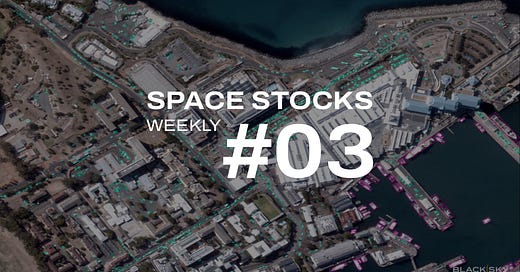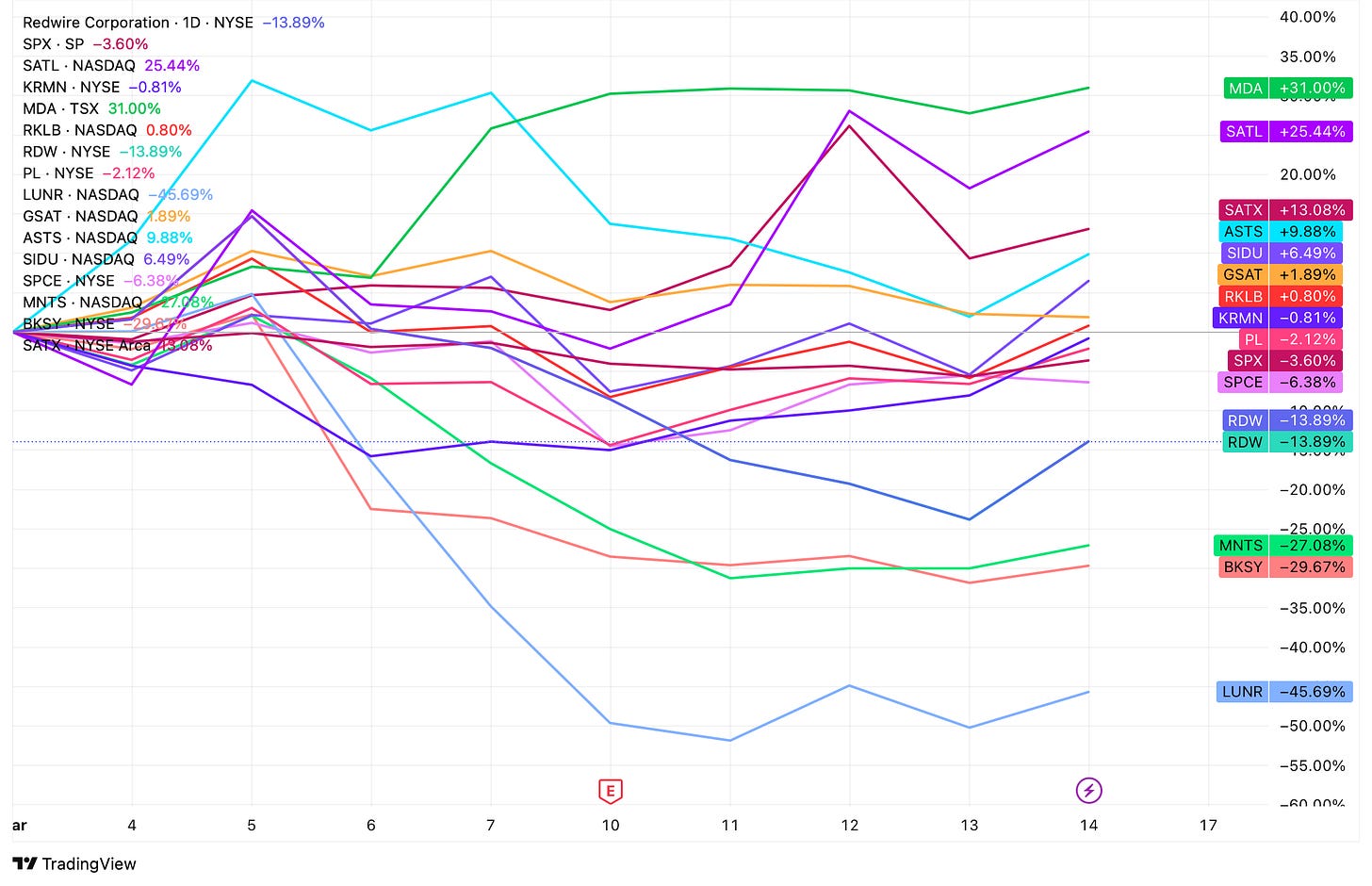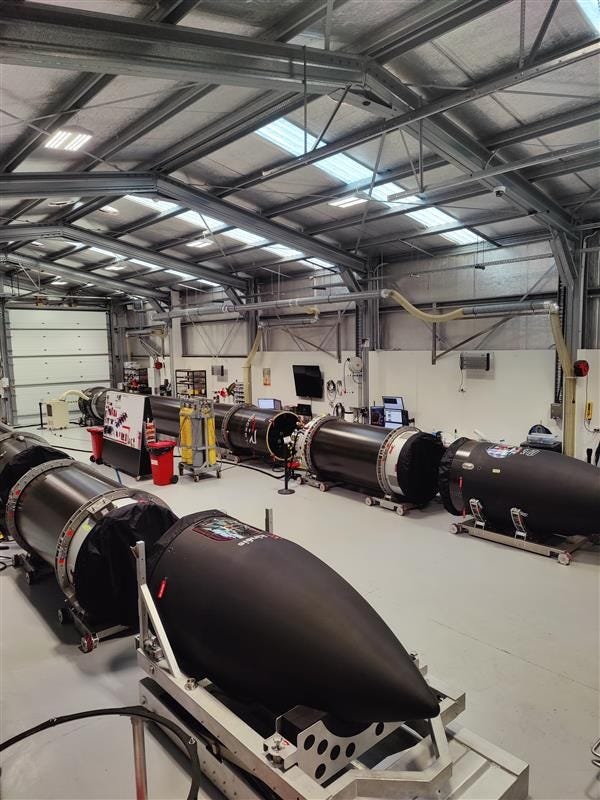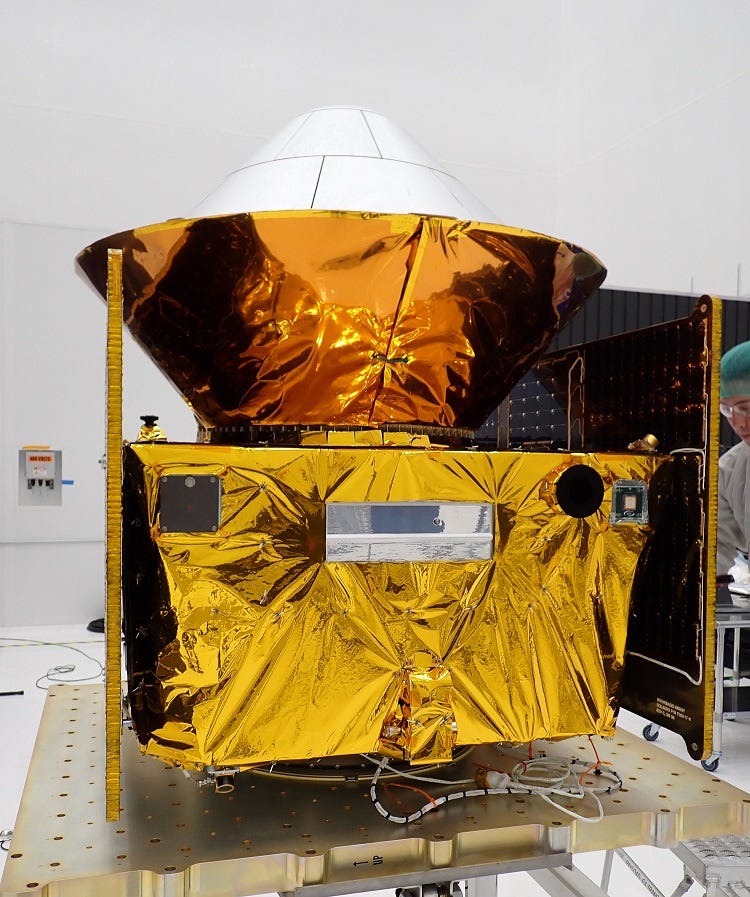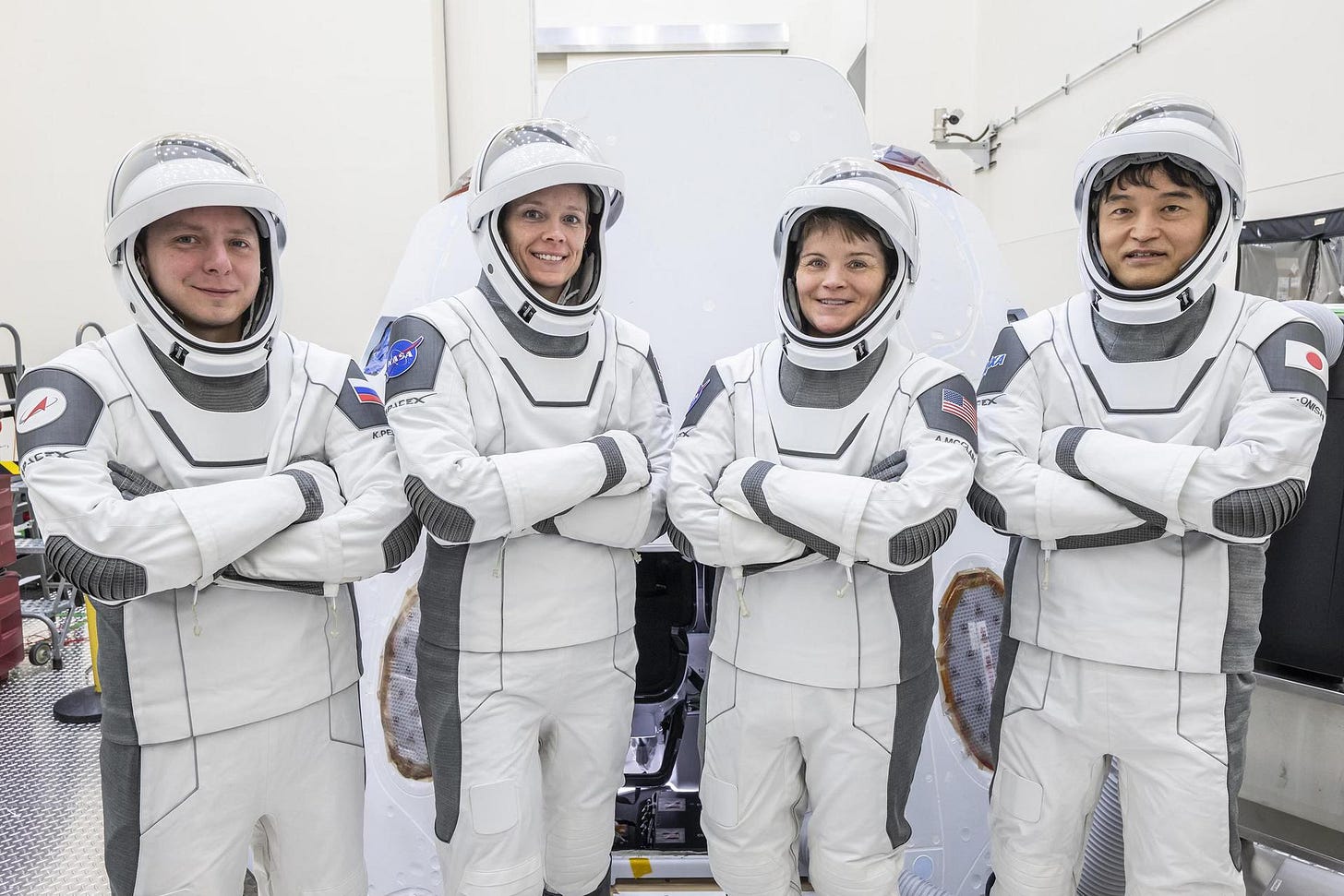Space Stocks Weekly #3
BlackSky's Gen-3 delivers first insights, Rocket Lab to acquire Mynaric, Redwire misses revenue estimates, and more!

Good morning, space investors!
Before diving into this week’s updates, I want to thank you for following along and welcome the 5 new subscribers—AD LUNAM now has 116 subscribers!
To get my new posts directly in your inbox, you can subscribe to my newsletter here.
The format
Here’s how Space Stocks Weekly works: I start by sharing the latest news on publicly traded space companies, followed by updates on the broader space industry, including private companies.
This way, you get the full picture of what’s happening in the space industry.
Have we hit the bottom yet?
Space Stocks Performance Year-to-Date
While MNTS 0.00%↑ has been down due to fears of more dilution and possibility of bankruptcy, many other companies are struggling because of broader economic factors. Since mid-February, space stocks have been hit hard following a massive year in 2024, mainly due to uncertainty around tariffs and concerns about rising inflation. This situation has led to a downtrend momentum across space companies, with seeing their stock crashing as investors rotate to safer sectors such as utilities and consumer goods.
Space Stocks Performance Since March 1st, 2025
Since March 1st, it’s been interesting to see how space stocks have been performing despite tariffs threats. MDA Space has been the top performer this month after amazing quarterly results. Meanwhile, LUNR 0.00%↑ has had the worst performance, mainly due to their lunar lander tipping over for the second time in a row.
On March 11, many space stocks saw their first green day in a week. However, most of those gains were erased the next day. On Friday, macroeconomic was favorable across all sectors, with most space stocks ending the day solidly in the green. And unlike previous weeks, investors didn’t rush to sell just before the market closes for the weekend. Whether this marks the start of a rebound or simply a dead cat bouncing remains to be seen. Only time will tell!
Most space stocks have already reported their quarterly results, so unless significant catalysts happen, market sentiment is likely to drive primarily the sector in the coming weeks.
Space Stocks Updated Earnings Calendar
Here is the updated calendar with the official Q4 earnings report dates:
PL 0.00%↑ Mar 20 (After Market Close)
* Intuitive Machines (LUNR 0.00%↑) has not announced the official date for their Q4 earnings yet, but it is potentially by end of March.
Rocket Lab to Acquire Mynaric
Rumors of an acquisition have been circulating for a while, but Rocket Lab has now confirmed it. The company has announced plans to acquire Mynaric, a leader in laser optical communication technology for satellites. This move is part of Rocket Lab’s strategy to expand its space systems capabilities. It’s now clear that the company also intend to work on their own megaconstellation and potentially compete with big players in the industry like SpaceX’s Starlink, ASTS 0.00%↑, MDA Space and Eutelsat.
Mynaric has already been working with Rocket Lab, providing CONDOR Mk3 communication terminals for their $500 million contract with the Space Development Agency (SDA) to manufacture 18 satellites.
The $75 million acquisition of Mynaric is a strategic move for Rocket Lab, especially as Mynaric is on the brink of filing for Germany's Chapter 11 bankruptcy protection. By acquiring Mynaric, Rocket Lab not only helps "save" its supplier to be able to fulfill their $500 million contract with the SDA, but also establishes a presence in Europe, with a new location in Munich.
With the acquisition of Mynaric, inter-satellite laser communication (ISLC) has been added to Rocket Lab’s portfolio, a key technology for constellations of communication satellites.
During their last earnings call, Rocket Lab announced Flatellite—a flat and low-mass satellite design tailored for megaconstellation.
"And [Flatellite is] more than just a new product developed to serve our customers’ ever-evolving needs. It's a bold, strategic move toward operating our own constellation and delivering services from space."
— Rocket Lab
Furthermore, Rocket Lab has announced an “At The Market” (ATM) equity offering, where the company may sell up to $500 million in common stock over time, at its discretion.
The funds raised through this ATM offering are intended to be used to support expansion and acquisitions, including the purchase of Mynaric.
Redwire Misses Revenue Estimates
RDW 0.00%↑ fell 20% in after-hours trading last Monday following its Q4 earnings report. While revenue grew 25% year-over-year to $304.1 million, it missed the $310 million guidance. The company reported a larger net loss of $(114.3) million, up from $(27.3) million in the prior year, and free cash flow decreased to $(28.3) million, compared to $(7.1) million last year.
For Q4 2024, however, free cash flow was $3.0 million, down from $12.6 million in Q4 2023. Q4 revenue increased 9.6% to $69.6 million, compared to $63.5 million in the same period last year. Adj. EBITDA for Q4 2024 dropped by $10.9 million, falling to $(9.2) million, compared to $1.7 million in Q4 2023.
For 2025, Redwire estimates revenues of $535 million to $605 million for 2025, with adj. EBITDA ranging from $70 million to $105 million, and expects positive free cash flow.
BlackSky Delivered First AI-Powered Imagery Analysis
Just three weeks after launching its first Gen-3 satellite on February 18, BKSY 0.00%↑ already delivered its first AI-powered analysis. The company's AI technology successfully detected and identified objects on the ground using the satellite’s high-resolution images.
Gen-3 satellites are BlackSky's latest Earth observation satellites designed to capture high-resolution images. With advanced AI capabilities, they can automatically detect and identify objects like vehicles and ships. This makes them especially useful for government, defense, and commercial applications that need fast and accurate insights.
BlackSky also plans to expand its network with seven more Gen-3 satellites over the next year.

Intuitive Machines Athena Sends A Last Signal
On March 6, 2025, Intuitive Machines' Athena lander made history by landing closer to the Moon’s South Pole than any mission before. The lander touched down in a shallow crater in the Mons Mouton region. Although Athena landed on her side, the mission still achieved some objectives.
Within 12 hours, Athena transmitted some valuable data, including from NASA’s PRIME-1 drill and Nokia’s 4G/LTE network. The mission ended early because the lander couldn’t recharge its batteries due to its orientation.
This week, CEO Steve Altemus posted an article on Intuitive Machines’ website, reflecting on IM-2 mission:
“IM-2 also broke new ground in the performance of our proprietary propulsion system, which was designed, 3D printed, and tested in-house. Using renewable cryogenic liquid methane and liquid oxygen—materials present elsewhere in our solar system—IM-2 reached lunar orbit in only five days and validated the complete propulsion system through six main engine firings. We believe this system is also capable of supporting future missions to Mars and beyond.”
In her final communication, Steve Altemus said that Athena sent the names of all Intuitive Machines employees who helped make IM-2 mission possible.
Intuitive Machines has not announced the official date for their Q4 earnings report yet, but it is supposedly by end of March.
Rocket Lab Updates
This week, the end-to-end space company deserves its special spot, there’s too much to tell… Not only did Rocket Lab announce the acquisition of Mynaric, but they've also:
Been awarded by Airbus to supply solar panels and other systems for Eutelsat OneWeb megaconstellation, a European competitor to Starlink.
Unveiled a new satellite software for ground data, spacecraft operations and constellation management
Getting ready to launch two missions within 72 hours; one of them to deploy a weather monitoring satellite for the Japanese company IQPS has already launched and 5 more nanosatellites for French company Kinéis will be launching on March 18.
Had SpaceX deployed Rocket Lab’s third "Pioneer" spacecraft for Varda. The capsule is expected to land in Australia in the coming weeks, after the pharmaceutical company completes their in-space manufacturing mission.
…and on top of that, CEO Sir Peter Beck has written an article on SpaceNews about NASA’s Mars Sample Return program and the reason NASA should choose Rocket Lab’s proposal.
What a week!!
Awarded by Airbus to Power Next-Gen OneWeb Constellation for Eutelsat
On March 12, Rocket Lab announced that it had been selected by Airbus to supply solar panels for 100 OneWeb satellites, slated for launch in 2026. Manufactured by Airbus, OneWeb is Eutelsat's constellation designed to provide global connectivity, similar to SpaceX's Starlink.
Rocket Lab will deliver 200 solar panels that can provide 80 kW of power, all manufactured at their facility in Albuquerque, New Mexico.
The value of the contract has not been disclosed, but should be reflected in the backlog for Q1 earnings.
It’s not the first time that Rocket Lab is selected to supply solar panels for OneWeb—the company has already delivered over 450 solar panel in 2021 for Eutelsat’s constellation.
Getting Ready to Launch Two Missions Within 72 Hours
On Friday evening, Rocket Lab successfully launched their 61st Electron mission, deploying the QPS-SAR-9 satellite for Japanese company iQPS. This is the second of eight planned launches for iQPS.
iQPS satellites use a synthetic aperture radar (SAR) technology to capture Earth images in any weather and provide real-time observation data.
Rocket Lab’s next mission (“High Five”) is set to launch from New Zealand’s Launch Complex 1 on March 18 to deploy five satellites for French IoT company Kinéis. This is the last mission for Kinéis’ constellation of 25 satellites.
Rocket Lab’s Third Pioneer Spacecraft in Orbit
On March 15, SpaceX successfully launched Rocket Lab's third Pioneer spacecraft for Varda as part of the Transporter-13 mission. The W-3 mission marks Varda’s third collaboration with Rocket Lab, providing a spacecraft that enables the pharmaceutical company to produce products in a microgravity environment.
This follows the successful W-2 mission, during which Varda’s 120kg capsule landed in South Australia a few days ago. After Varda completes their in-space manufacturing process, Rocket Lab will guide the capsule back to Earth for re-entry and landing.
Photo of the Week

By subscribing to this newsletter, you are supporting the creation of insightful, high-quality content focused on the space industry.
As a paid subscriber, you will gain access to additional exclusive benefits:
Exclusive deep dives into space stocks and company developments
Full insights into quarterly space stock reports
Access to a subscriber-only chat for in-depth discussions and transparent updates on my portfolio moves
Upgrade today to get the most out of the space industry!
SpaceX Launches Crew-10 Mission
NASA's SpaceX Crew-10 mission launched on March 14, 2025, with four astronauts aboard Crew Dragon Endurance heading to the International Space Station (ISS). The crew includes NASA astronaut Anne McClain, returning for her second spaceflight, and Nichole Ayers, a U.S. Air Force major on her first mission and the first member of NASA’s 2021 astronaut class to join a crew. Also aboard are JAXA astronaut Takuya Onishi, on his second ISS mission, and Roscosmos cosmonaut Kirill Peskov, making his first trip to space.
Endurance has been docked with the ISS mid-night on March 16.
Crew-10's arrival on the ISS coincides with Crew-9's departure aboard Crew Dragon Freedom. Crew-9 includes NASA astronaut Nick Hague and Roscosmos cosmonaut Aleksandr Gorbunov, who have been on the ISS since September. Also on board Freedom will be NASA astronauts Suni Williams and Butch Wilmore, who have been on the station since June. They were the first crew to fly aboard a Boeing CST-100 Starliner spacecraft.
Williams and Wilmore were initially scheduled to stay on the ISS for only eight days, but issues with the Starliner spacecraft delayed their return for several months. NASA explored options for an earlier return but ultimately decided to follow standard procedures by sending Crew-9 to the ISS with two empty seats, allowing them to bring the astronauts back.


